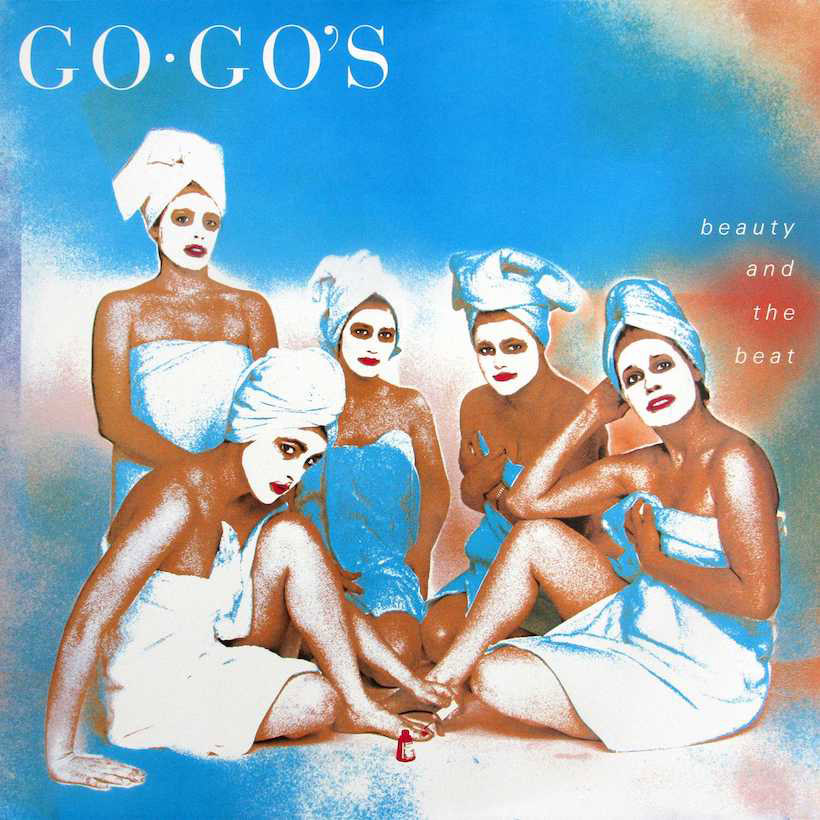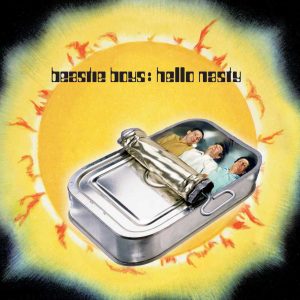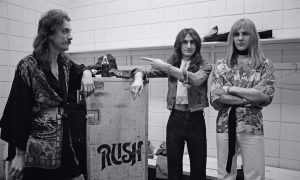As the snappy drumbeats and bouncy guitar riffs of “Our Lips Are Sealed” open Beauty and the Beat, you can’t help but tap your feet. It’s new wave at its best: pop with just enough edge and plenty of hooks. And when the album was released in July 1981, it was also the world’s introduction to five of the coolest women in music: The Go-Go’s. With unforgettable tracks like “We Got The Beat,” “This Town” and “Our Lips Are Sealed,” Beauty and the Beat established The Go-Go’s as one of the hottest new bands of the decade. Not only did it hit No.1 on the Billboard 200, it stood as the second best-selling album of the year, and one of the highest-selling debut albums of all time.
Listen to Beauty and the Beat on Apple Music and Spotify.
Punk beginnings
Despite the record’s radio-friendly, cheerful melodies, The Go-Go’s were actually a product of Los Angeles’ burgeoning punk rock scene. Playing under the pseudonym of Dottie Danger, frontwoman Belinda Carlisle began her musical career in the late 70s as a drummer for the LA band Germs (her bandmate Pat Smear went on to join Nirvana and, later, Foo Fighters). Guitarist Charlotte Caffey played bass in local band The Eyes, while rhythm guitarist Jane Wiedlin was a mainstay of the scene and an in-demand underground clothing designer. The three women, along with original Go-Go’s Elissa Bello and Margot Olavarria, met and bonded at shows – eventually deciding to form a band of their own.
With regular gigs at venues like Hollywood’s Whisky A Go Go and The Masque, The Go-Go’s quickly built a following. Soon, they were offered a support slot with Madness on tour in the UK, and it was there that the group recorded their very first single, “We Got The Beat”/“How Much More,” on British indie label Stiff Records.
By the turn of the 80s, drummer Gina Schock and bassist Kathy Valentine had replaced Bello and Olavarria, solidifying The Go-Go’s classic line-up. The band’s sound had evolved, too, moving away from punk rock towards the emerging, pop-forward new wave genre.
In April 1981, the quintet signed with IRS Records, home to some of the biggest alternative, new wave, and college rock acts of the decade, including The Bangles, R.E.M., Dead Kennedys, and The Stranglers, among others. The Go-Go’s soon headed to New York to record their debut album with producers Rob Freeman (Blondie, Ramones, KISS) and Richard Gottehrer (Richard Hell, Joan Armatrading, The Fleshtones).
A pop-cultural touchstone
Meanwhile, the infectious “We Got The Beat” was released in the UK. Throughout the summer, the high-energy track picked up steam in Europe’s dance clubs, making its way to DJs across the Atlantic, where it peaked at No.35 on the Billboard Hot Dance Club Play chart. Though the IRS version of the song, re-recorded for Beauty and the Beat, wouldn’t officially be released in the US until January 1982 (and with a different B-side, “Can’t Stop The World”), it still packed a punch, spending three weeks at No.2 on the Billboard Hot 100 and becoming The Go-Go’s’ biggest hit. The track also played during the opening credits of the 1982 cult classic Fast Times At Ridgemont High, officially cementing the song as a touchstone of 80s pop culture.
Beauty and the Beat’s lead single, however, was the sassy yet wistful “Our Lips Are Sealed.” Released in June 1981, the song was inspired by a letter that Jane Wiedlin received from The Specials’ frontman, Terry Hall. The two had an affair while The Go-Go’s were on their first UK tour, but their brief relationship wasn’t for naught. Hall’s words were borrowed throughout the track – so much so that he was credited as a co-writer.
Though “Our Lips Are Sealed” only peaked at No.20 on the Billboard Hot 100, it also landed on the Dance and Rock Tracks chart, ultimately remaining on the US charts for over 30 weeks – which is highly unusual for the lifespan of a single. The song did better in Canada and Australia, though, peaking at No.3 and No.2, respectively.
The embodiment of cool, carefree LA
The colorful, accompanying music video for “Our Lips Are Sealed” followed the band in a 60s convertible, driving around Beverly Hills and splashing about in the city’s famous Electric Fountain. To teens around the world, The Go-Go’s were the embodiment of a cool, carefree LA lifestyle.
Another highlight on the album is the tongue-in-cheek ode to Los Angeles, “This Town.” In layered harmonies, the women taunt, “This town is our town/(This town) It is so glamorous/Bet you’d live here if you could/And be one of us.” Then they expose the reality of their city in the last verse: “Change the lines that were said before/We’re all dreamers – we’re all whores/Discarded stars/Like worn out cars/Litter the streets of this town.”
Elsewhere on the album, influences of 60s-era girl-group balladry can be heard in songs like “Fading Fast,” while rougher, faster tracks like “How Much More’,” “You Can’t Walk In Your Sleep (If You Can’t Sleep),” and “Skidmarks On My Heart” reveal the band’s punk rock roots, bringing to mind many of their contemporaries, The Jam and The Clash among them.
Breaking gender barriers
Following its release, Beauty and the Beat earned The Go-Go’s their first Grammy nomination – for Best New Artist – and left fans eager for more, as evidenced by their sophomore bestseller, 1982’s Vacation. While the band would go their separate ways by the middle of the decade (with multiple reunions to follow throughout the 90s and beyond), Beauty and the Beat remains a foundational new wave record. The album also broke gender barriers, establishing The Go-Go’s the only all-female act to wholly write and record a No.1 album on the Billboard 200.
Decades after its release, Beauty and the Beat still feels fresh, urgent and… just plain cool. At first glance, the band could easily have been brushed off as a manufactured pop act, but that couldn’t have been further from the truth. Though their music was played on Top 40 radio, The Go-Go’s weren’t anything like the polished, pop acts of the era. Instead, they offered something else – true musicianship, sharp-witted lyricism, and a unique, defiant sound. Embodying the independent spirit of the social misfit, The Go-Go’s were, perhaps, the original purveyors of “girl power”, offering teenagers around the country something to relate – and, ultimately, aspire – to.




